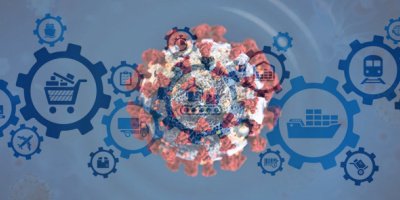While the new iSeries servers may have been the gems in last week's iSeries announcement, they got much of their shine from the framework in which IBM presented them. That framework is an entirely new system for configuring and pricing iSeries hardware and software that will have a huge impact on your IT purchase decisions in 2003.
Though IBM is not releasing hardware and software prices until tomorrow, it has already provided plenty of information about the system it will use to price its servers. This article explains that system so that you can properly interpret the details in tomorrow's price announcement.
New Rules for New Servers
As I explained in last week's article, IBM's new system applies only to new iSeries models and the enhanced version of the i890. As I discuss the system, please understand that much of it does not apply to the iSeries 800. I'll point out this model's differences as we walk through the system.
Under the new system, each model except the iSeries 800 comes in two editions: Standard and Enterprise. The Standard Edition offers minimal software licenses and no interactive CPW capability. The Enterprise Edition includes many more software licenses (see last week's article for details) and unlimited interactive CPWs. Naturally, the Enterprise Edition of each model will cost more than its Standard Edition, though we won't know how much more until tomorrow. Today, however, we can examine the terms and conditions that are associated with these editions. Here are the most important ones.
Each model uses the same software tier for both editions. As the following table shows, your software tier will remain the same whether you get the Standard or Enterprise Edition of any model. By contrast, an interactive CPW upgrade on existing models can land you in a higher tier and increase all of your software costs. The new system also provides more CPWs per software tier than in the past. Under the old system, for instance, any processor with more than 1,070 processor CPWs was in the P20 software tier. In the new system, you can scale up to an i810 with 1,450 CPWs and still be in the P10 tier.
Software Tiers for New and Enhanced Models
|
Model
|
Standard Edition
|
Enterprise Edition
|
|
i890--24/32-way (29,300 to 37,400 CPWs)
i890--16/24-way (20,000 to 29,300 CPWs) |
P50
P50 |
P50
P50 |
|
i870--8/16-way (11,500 to 20,000 CPWs)
|
P40
|
P40
|
|
i825--3/6-way (3,600 to 6,600 CPWs)
|
P30
|
P30
|
|
i810--2-way (2,700 CPW)
i810--1-way (1,450 CPW) i810--1-way (1,020 CPW) |
P20
P10 P10 |
P20
P10 P10 |
As I mentioned earlier, the iSeries 800 does not have Standard and Enterprise Editions. You can purchase a 300 CPW iSeries 800 with 25 interactive CPWs or a 950 CPW version with 50 interactive CPWs. The 300 CPW configuration is in the P05 software tier, while the 950 CPW configuration is in the P10 tier.
Licenses for OS/400 are priced on a per processor basis. On all of the new models and the i890, customers will pay for OS/400 based on the number of active processors on the server. While the iSeries 800 and i810 have a fixed number of processors that are all active, the larger models come with both active and standby processors. Both the Standard and Enterprise Editions of these models include entitlements to OS/400 on the active processors (three for the i825, eight for the i870, and either 16 or 24 for the i890). If you activate any of the standby processors on a permanent basis and run OS/400 on them, you will need to pay a $30,000 per-processor license charge for OS/400.
Standby processors can be activated for Linux without an OS/400 charge. If you activate a standby processor on a permanent basis and run Linux on it, you will not pay for an OS/400 license on that processor. IBM will only charge you a processor activation fee that ranges from $20,000 to $30,000 per CPU, depending on the server model. Customers who order Enterprise Editions of the i870 and i890 will also receive one free Linux processor activation.
Standby processors can be activated on a temporary or permanent basis. If you activate standby processors on a temporary basis, you won't have to purchase OS/400 licenses or pay processor activation fees. Instead, you will pay for what IBM calls "processor days" (the equivalent of running one processor for a day). For instance, if you were to activate three standby processors for four days, you would pay IBM for 12 processor days. IBM plans on charging $1,100 to $1,300 per processor day, depending on the server model, for temporary processor activations. However, customers will receive up to 14 free processor days to try out the new feature.
The Enterprise Editions are required to support interactive workloads. Since the Standard Editions of the i810, i825, i870, and i890 do not support 5250 applications, you will need to purchase the Enterprise Edition to get this support. However, if you use the WebFacing tool to browser-enable your 5250 applications, they will run without requiring any interactive CPWs. This "no interactive overhead" feature is only available on the new iSeries models (including the iSeries 800) and the i890. IBM has no plans to extend this capability to current models even if they are running OS/400 V5R2. This, as one of my IBM sources privately admitted, is to provide an incentive to get customers to upgrade to the new servers. IBM will provide upgrades to the new servers from all current i8xx servers, the i270, and the AS/400 models 720, 730, and 740.
A Little Perspective
IBM's decision to reserve its "no interactive overhead" WebFacing enhancement for new iSeries servers may irritate some customers. However, before those customers start complaining, they should consider the many benefits that an upgrade could offer them. These include the delay or outright avoidance of an upgrade to a higher software tier, the freedom to increase or decrease computing capacity to match immediate needs, and the financial benefits of paying only for the capacity in use.
Of course, we will not know the magnitude of these benefits until IBM releases list prices tomorrow. As soon as it does, I will start poring over the figures to help you sort through your options.
Lee Kroon is a Senior Industry Analyst for Andrews Consulting Group, a firm that helps mid-sized companies manage business transformation through technology.






















 More than ever, there is a demand for IT to deliver innovation. Your IBM i has been an essential part of your business operations for years. However, your organization may struggle to maintain the current system and implement new projects. The thousands of customers we've worked with and surveyed state that expectations regarding the digital footprint and vision of the company are not aligned with the current IT environment.
More than ever, there is a demand for IT to deliver innovation. Your IBM i has been an essential part of your business operations for years. However, your organization may struggle to maintain the current system and implement new projects. The thousands of customers we've worked with and surveyed state that expectations regarding the digital footprint and vision of the company are not aligned with the current IT environment. TRY the one package that solves all your document design and printing challenges on all your platforms. Produce bar code labels, electronic forms, ad hoc reports, and RFID tags – without programming! MarkMagic is the only document design and print solution that combines report writing, WYSIWYG label and forms design, and conditional printing in one integrated product. Make sure your data survives when catastrophe hits. Request your trial now! Request Now.
TRY the one package that solves all your document design and printing challenges on all your platforms. Produce bar code labels, electronic forms, ad hoc reports, and RFID tags – without programming! MarkMagic is the only document design and print solution that combines report writing, WYSIWYG label and forms design, and conditional printing in one integrated product. Make sure your data survives when catastrophe hits. Request your trial now! Request Now. Forms of ransomware has been around for over 30 years, and with more and more organizations suffering attacks each year, it continues to endure. What has made ransomware such a durable threat and what is the best way to combat it? In order to prevent ransomware, organizations must first understand how it works.
Forms of ransomware has been around for over 30 years, and with more and more organizations suffering attacks each year, it continues to endure. What has made ransomware such a durable threat and what is the best way to combat it? In order to prevent ransomware, organizations must first understand how it works. Disaster protection is vital to every business. Yet, it often consists of patched together procedures that are prone to error. From automatic backups to data encryption to media management, Robot automates the routine (yet often complex) tasks of iSeries backup and recovery, saving you time and money and making the process safer and more reliable. Automate your backups with the Robot Backup and Recovery Solution. Key features include:
Disaster protection is vital to every business. Yet, it often consists of patched together procedures that are prone to error. From automatic backups to data encryption to media management, Robot automates the routine (yet often complex) tasks of iSeries backup and recovery, saving you time and money and making the process safer and more reliable. Automate your backups with the Robot Backup and Recovery Solution. Key features include: Business users want new applications now. Market and regulatory pressures require faster application updates and delivery into production. Your IBM i developers may be approaching retirement, and you see no sure way to fill their positions with experienced developers. In addition, you may be caught between maintaining your existing applications and the uncertainty of moving to something new.
Business users want new applications now. Market and regulatory pressures require faster application updates and delivery into production. Your IBM i developers may be approaching retirement, and you see no sure way to fill their positions with experienced developers. In addition, you may be caught between maintaining your existing applications and the uncertainty of moving to something new. IT managers hoping to find new IBM i talent are discovering that the pool of experienced RPG programmers and operators or administrators with intimate knowledge of the operating system and the applications that run on it is small. This begs the question: How will you manage the platform that supports such a big part of your business? This guide offers strategies and software suggestions to help you plan IT staffing and resources and smooth the transition after your AS/400 talent retires. Read on to learn:
IT managers hoping to find new IBM i talent are discovering that the pool of experienced RPG programmers and operators or administrators with intimate knowledge of the operating system and the applications that run on it is small. This begs the question: How will you manage the platform that supports such a big part of your business? This guide offers strategies and software suggestions to help you plan IT staffing and resources and smooth the transition after your AS/400 talent retires. Read on to learn:
LATEST COMMENTS
MC Press Online